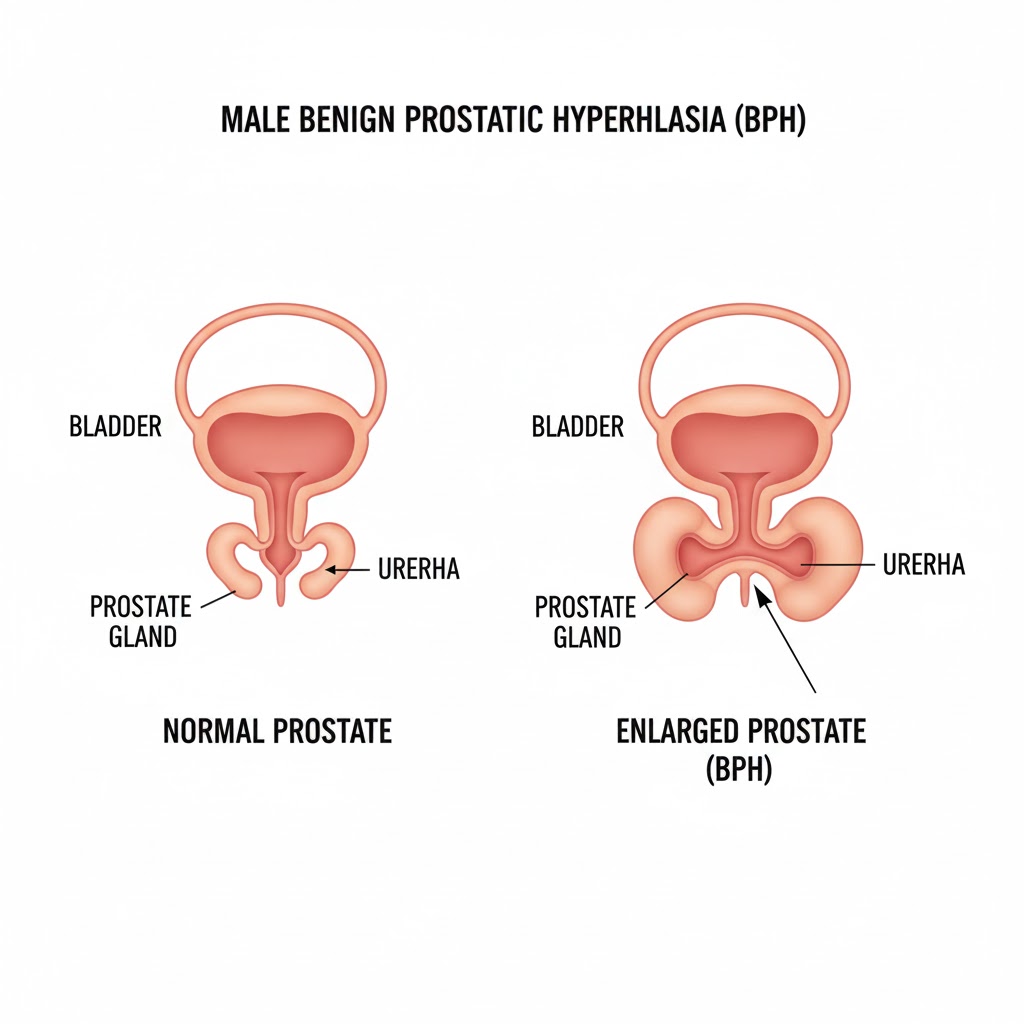Benign Prostatic Hyperplasia (BPH), commonly referred to as an enlarged prostate, is one of the most frequent urological conditions affecting men, particularly those over the age of 50. The condition involves the non-cancerous enlargement of the prostate gland, which can put pressure on the urethra and affect urinary function. If you’re experiencing symptoms of BPH in New York, it’s important to understand your treatment options and seek care from a qualified urologist.
Symptoms of BPH
The symptoms of BPH typically develop gradually and can vary in severity. Men often seek treatment when symptoms interfere with daily life or sleep.
- Frequent urination, especially at night (nocturia)
- Weak urine stream or difficulty starting urination
- Sensation of incomplete bladder emptying
- Urgency or inability to delay urination
- Dribbling at the end of urination
These symptoms are not only uncomfortable but can also lead to urinary tract infections or bladder damage if left untreated.
Diagnosis of BPH
To diagnose BPH, a urologist will typically perform a combination of tests, including:
- Digital rectal exam (DRE)
- Urinalysis to rule out infections
- PSA (Prostate-Specific Antigen) blood test
- Uroflowmetry and post-void residual urine test
- Imaging tests such as ultrasound or cystoscopy
These tests help determine the severity of the condition and rule out other possible causes like prostate cancer or urinary stones.
Non-Surgical Treatment Options for BPH
For many men with mild to moderate symptoms, lifestyle changes and medications can offer relief.
Medications: Alpha-blockers such as tamsulosin (Flomax) and 5-alpha-reductase inhibitors like finasteride (Proscar) are commonly prescribed to relax prostate muscles or reduce prostate size.
Behavioral Modifications: Reducing fluid intake before bedtime, avoiding caffeine and alcohol, and practicing double-voiding (urinating twice in a row) may also help manage symptoms.
Minimally Invasive and Surgical Options
When medications fail to provide sufficient relief or side effects become intolerable, minimally invasive or surgical options may be considered. Advances in urological surgery now offer several effective approaches:
UroLift® System: This procedure lifts and holds the enlarged prostate tissue so it no longer blocks the urethra. It’s often performed in-office and doesn’t require ongoing medication.
Transurethral Resection of the Prostate (TURP): Considered the gold standard for BPH surgery, TURP involves removing a portion of the prostate through the urethra to relieve pressure.
Laser Therapy: Laser treatments like GreenLight™ use concentrated light to remove excess prostate tissue with minimal bleeding and faster recovery.
Understanding BPH (Enlarged Prostate) and Treatment Options in New York: Conclusion
If you’re experiencing urinary symptoms associated with BPH, timely diagnosis and treatment can dramatically improve your quality of life. In a city like New York, access to advanced diagnostic tools and minimally invasive treatments makes managing BPH more efficient than ever. Don’t wait for symptoms to worsen—consult with an experienced urologist to explore your best options.
Personalized BPH Care with Dr. Yaniv Larish
At Fifth Avenue Urology, Dr. Yaniv Larish specializes in diagnosing and treating benign prostatic hyperplasia using both medical and advanced surgical techniques. He offers expert guidance tailored to each patient’s needs, helping New Yorkers manage urinary symptoms and improve bladder function.
Whether you’re seeking non-surgical treatments or the latest in minimally invasive BPH procedures, Dr. Larish provides compassionate, cutting-edge care.
FIFTH AVENUE UROLOGY
Dr. Yaniv Larish
4 East 76th Street
New York, NY 10021
Phone: 212-675-3186
Website: https://www.fifthavenueurology.com/

